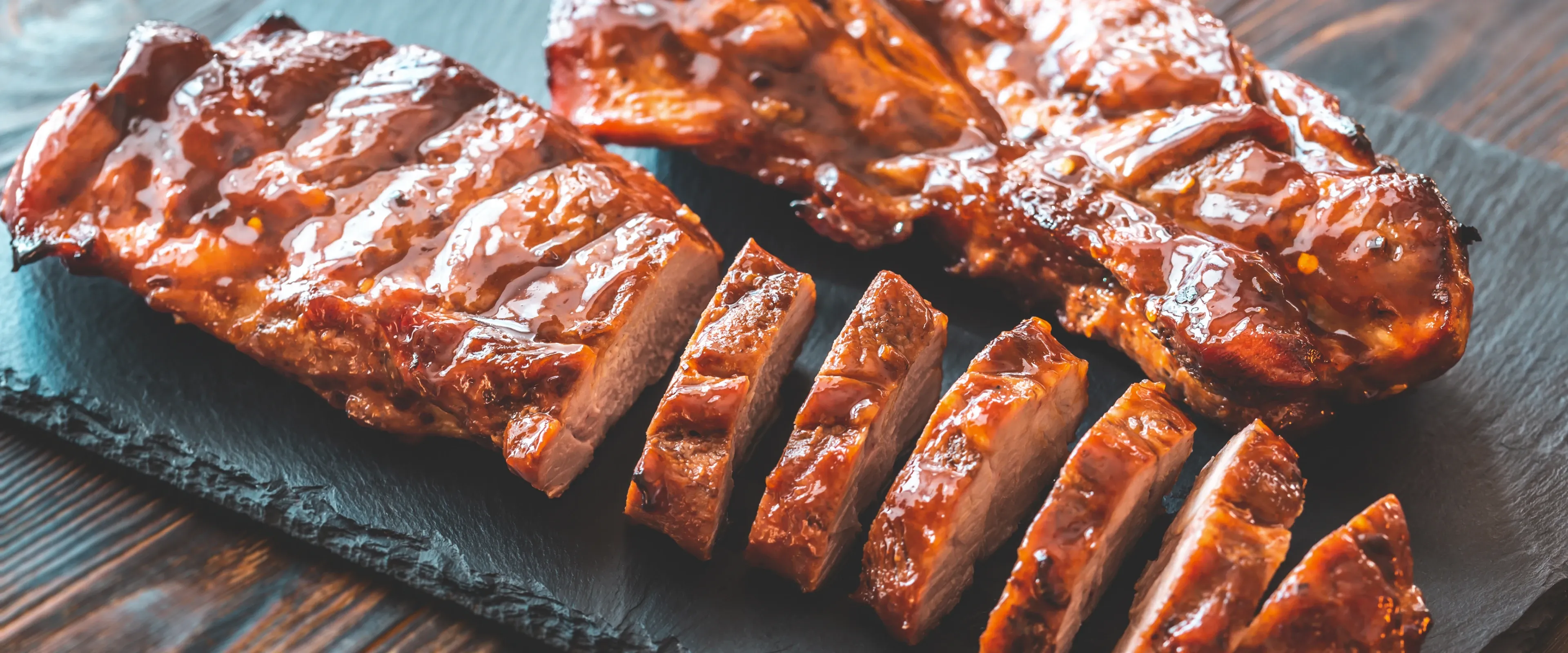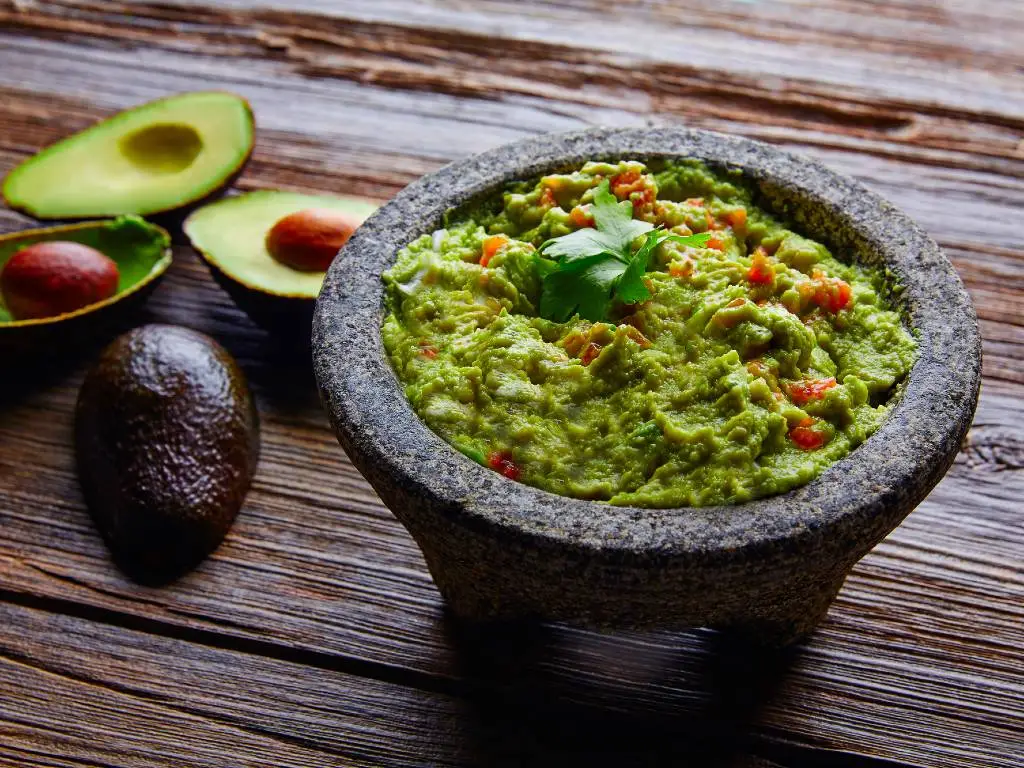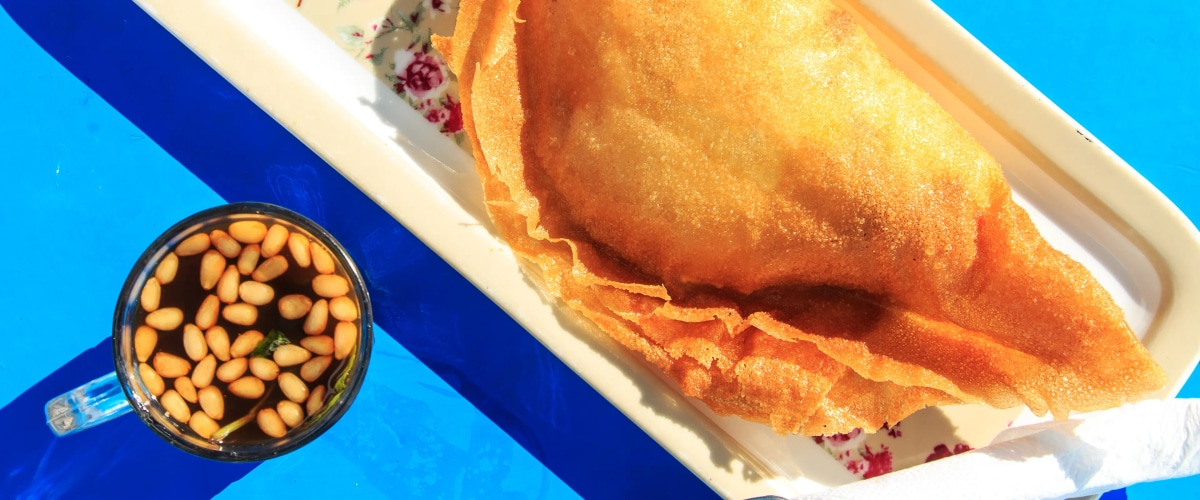
Char Siu: The Barbecued Meat That's the Heart of Hong Kong Cuisine
Pierced through the center, slowly turning on a metal skewer and glistening in the light, crimson char siu can be spotted on every Hong Kong street corner. Offering its tantalizing signature blend of sweet, sour, and umami flavors, the slowly roasting barbecued pork is ever-tempting, like cherry red sweets behind the glass of a candy shop.
Char siu refers specifically to the Cantonese dish of barbecued pork loved throughout Hong Kong. Served with a carbohydrate is the most popular way to enjoy it: whether traditionally over rice, mixed into a stir-fry, or inside a fluffy white char siu bao.
The place to find such delicacies is in the region’s many siu mei shops—restaurants serving a selection of roasted meats, including pork, goose, and chicken, which hang in their windows, slowly tenderizing.
Like the soaring skyscrapers that almost touch the clouds, the iconic Star Ferry passing back and forth over the harbor, and the many market stalls lining the streets, char siu has long been a symbol of Hong Kong.

Flavors of a dynasty
Despite their contentious relationship, many of Hong Kong’s most beloved dishes, including char siu, originated in China's Guangdong province during the Zhou dynasty. Char siu roughly translates as ‘to fork roast,’ giving insight as to its origins.
Around 3,000 years ago, cooking was significantly more rustic, and the traditional method for roasting involved simply skewering strips of seasoned meat, such as boar, pig, or chicken, and placing them over an open fire. This form of cooking persisted long past the end of the dynasty into the 1800s.
At the beginning of the 20th century, many Chinese residents were dispersed throughout Southeast Asia, bringing their popular and carefully perfected style of cooking to Hong Kong. Widescale industrialization from the 1950s until the late 1960s led to an influx of people and subsequently a higher cost of living (Hong Kong remains one of the world’s most expensive cities).
Hongkonger Kelvin Ho, AKA Epicurus Hong Kong on Instagram, is one of the longest-running and most well-known food and drink reviewers in the region. “For my family and many others, roasted meats were considered an extravagant item, so these dishes were treasured by those who ate them. However, char siu was often poor quality and sliced thinly to make it more affordable.”
As time went on, restaurants began to source better quality pork, transforming an already-loved dish into a cult favorite while retaining its modest price.

At this point, char siu with rice became a staple for residents and workers battling a high cost of living, and shops were opening across Hong Kong. Ho remembers, “When I was a child, we looked forward to eating char siu at the now-closed Lung Moon Restaurant in Wan Chai. Locals would bring along their newspapers and birdcages and enjoy the slightly blackened char siu.”
Although brightly colored bird cages are banned today, enjoying char sui is akin to visiting a European coffee shop to catch up with friends, read the paper, and watch a colorful array of characters over a hot drink.

The secrets of char siu
The major ingredients making up the famous char siu marinade are honey, hoisin, soy sauce, and Chinese Five Spice. Although char siu is often served with rice, its winning feature is the ability to be enjoyed without accompaniment; the crispy, sweet, and tender flavor carries the dish by itself.
Fermented bean curd is commonly added to the recipe to create its signature red color, however increasingly, thanks to the slow phase-out of both wood-fire pits and charcoal ovens, which aid in creating the slightly charred appearance, chefs are adding red food coloring to recreate the effect.
Although various cuts of the pig are used today, ‘floor scraping’ pork was a hit in the 1950s. The name refers to the pigs who were so fat that their stomachs would touch the floor. In the modern day, a more equal lean-to-fat ratio is preferred.
Modern-day Hong Kong strikes a balance between its Asian heritage and 21st-century access to a wider net of fresh ingredients. Among the many old-fashioned siu mei shops, high-end establishments are celebrating the classic in their own way.
For example, Mott 32, one of the world’s best Chinese restaurants, uses sustainable pork and Yellow Mountain honey from China, while The Chairman in Central steps away from a traditional glaze and instead uses Zhongshan sugar for a sweet finish.

An ever-evolving dish
The most traditional forms of cooking char siu require on years of skills and experience; often, the chef may not measure the temperature of the pork but will know by appearance or touch that it is roasted to perfection. More purist eateries use Apollo ovens—named thanks to their space capsule–like appearance—into which the meat descends, hidden from view.
Chan Yau Leung, Executive Chef at the one Michelin–starred Cantonese restaurant Duddell’s, says that “Char siu has evolved with Hong Kong society. Throughout history, we have made modifications according to the types of meat available and technological advancement. Unfortunately, the unique taste created by charcoal ovens is slowly disappearing in Hong Kong. Nowadays, using barbeque grills is an environmentally friendly compromise.”
In addition to the oven style, recipes vary in the amount of fat and the part of the pig used. Traditionally, the shoulder is used, although, at the constantly busy Kamcentre Roast Goose, they use the back of the neck. According to owner Jacky Kam, “To make good char siu, you need four things. The right piece of meat, a perfect marinade, the correct oven, and enough time.”
Half-fat, half-lean, fatty, and marbled are just a few variations that also make a difference to the flavor profile of the pork. While at Kamcentre, visitors can choose their fat ratio, Duddell’s Chef Leung has his own preference. “To me, the perfect char siu should be made from evenly marbled meat instead of exclusively fatty or lean meat. Ibérico pork is particularly popular.” Ibérico pork comes from Spain’s native Black Iberian pigs, which feed on acorns and are deliberately bred to be fattier, giving them a tender, nutty flavor.
While opinions differ on what constitutes the perfect barbecued pork, the core style has remained relatively unchanged for hundreds of years. First-time visitors should look for a crispy outside with the signature red coloration, a juicy, tender inside, and hopefully, a crowd of people outside your chosen restaurant.
Where to find char siu in Hong Kong
There’s a reason Joy Hing’s Roasted Meats tops every “best” list in the Hong Kong food scene. The family-run restaurant began as a small shop in Guangdong, China, during the Quing dynasty before moving to Hong Kong as a street food stall. Their now permanent residence cooks char siu in the traditional pre-war oven, served over rice, and queues stretch out the door.
For a different but equally loved version of char siu, Canton Room whips up char siu, made with pork collar, rice, and greens, topped with a sunny fried egg and roast pork drippings.
Dragon State
A Sheung Wan neighborhood favorite drawing crowds from all over the city, Dragon State’s siu mei outlet is as original and affordable as it gets. Order the sweetly glazed char siu with rice or a trio of three types of meat and some refreshing lemon tea.
Read more about food around the world
- Braziilan açaí
- Tahitian chow mein sandwiches
- Georgian Adjaruli Khachapuri
- Marseilles Brik à L'Oeuf
- Korean budae jjigae
- Kansas City burnt ends
- German döner kebab
- Basque marmitako
- Puerto Rican mofongo
- Colombian arepas
- Roman maritozzo
Plan your trip
Last updated October 2, 2024









